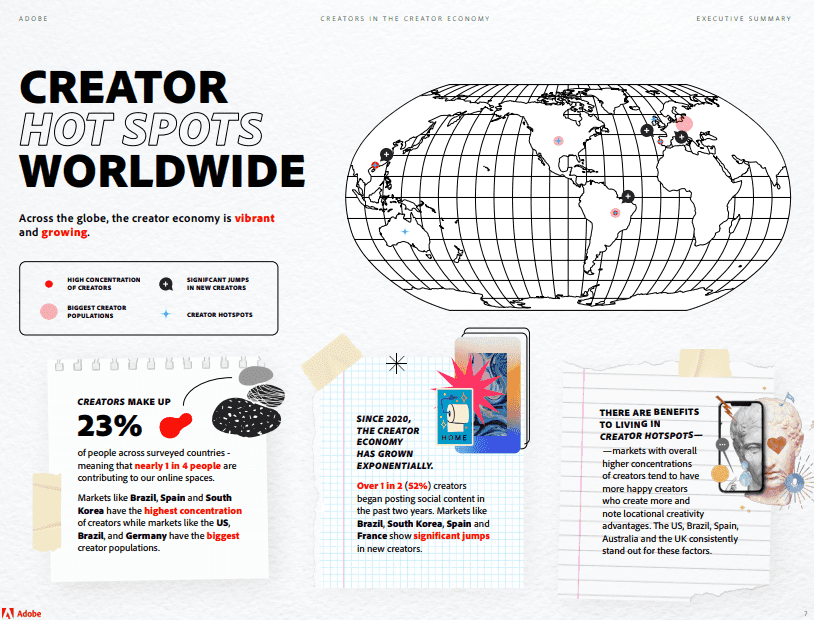Understanding the Creator Economy‘s Remarkable Evolution
Imagine a world where your passion, creativity, and unique perspective can become a sustainable career. Welcome to the creator economy—a dynamic, rapidly expanding ecosystem that‘s rewriting traditional employment narratives and empowering individuals worldwide to transform their talents into thriving businesses.
The creator economy represents more than just a trend; it‘s a fundamental shift in how we perceive work, creativity, and economic opportunity. Over the past decade, technological advancements and digital platforms have democratized content production, enabling millions of individuals to build personal brands, generate income, and connect with global audiences.
The Economic Landscape: Beyond Traditional Boundaries
When we examine the creator economy through a data-driven lens, the numbers are nothing short of extraordinary. What began as a niche phenomenon has rapidly evolved into a multi-billion dollar industry with profound implications for global economic structures.
As of 2024, the creator economy is estimated to be worth approximately \$250 billion, with projections suggesting it could expand to \$480 billion by 2027. This represents a compound annual growth rate that outpaces many traditional economic sectors, signaling a transformative moment in how we conceptualize work and entrepreneurship.
Demographic Dynamics: Who Are the Creators?
Contrary to popular perception, the creator economy isn‘t dominated exclusively by young digital natives. Our comprehensive analysis reveals a nuanced demographic landscape that challenges simplistic narratives.
Millennials currently represent the backbone of the creator economy, comprising over 40% of content creators. This generation, positioned at the intersection of technological fluency and professional experience, has proven particularly adept at leveraging digital platforms for economic opportunity.
Interestingly, gender dynamics within the creator economy present a compelling narrative. Approximately 78% of creators monetizing content are female, with particularly strong representation in niches like beauty, fashion, and lifestyle content. However, this numerical dominance doesn‘t necessarily translate to equitable economic outcomes, as significant pay disparities persist.
Global Distribution: A Worldwide Phenomenon
The creator economy is not confined to traditional tech hubs or developed markets. Our research indicates a fascinating global distribution that challenges Western-centric perspectives.
Brazil emerges as a surprising leader, boasting 106 million content creators—the highest concentration globally. South Korea follows closely, demonstrating remarkable digital entrepreneurship despite its relatively smaller population. These insights underscore the creator economy‘s truly international character.
Technological Enablers: Platform Ecosystems and Innovation
Digital platforms have been the critical infrastructure powering the creator economy‘s explosive growth. Each platform offers unique monetization mechanisms, audience engagement tools, and content distribution strategies.
YouTube remains a powerhouse, with creators earning approximately \$2,000 per million views. Instagram and TikTok have revolutionized short-form content, enabling rapid audience growth and monetization. Emerging platforms like Patreon provide subscription-based models that offer creators more predictable revenue streams.
The AI Revolution: Transforming Content Production
Artificial intelligence has emerged as a game-changing technology within the creator economy. An astonishing 94.5% of content creators now utilize AI tools for at least one aspect of their workflow, ranging from content generation to audience analytics.
These technological innovations are not about replacing human creativity but augmenting and streamlining creative processes. AI-powered tools help creators optimize content, understand audience preferences, and develop more targeted, engaging material.
Economic Implications and Challenges
Despite its remarkable growth, the creator economy faces significant challenges. Only 12% of full-time creators earn over \$50,000 annually, highlighting the economic precarity underlying this seemingly glamorous industry.
The startup ecosystem supporting creator technologies has also experienced volatility. In 2022, creator economy startup investments dropped 79% compared to the previous year, reflecting broader technological and economic uncertainties.
Monetization Strategies: Beyond Traditional Revenue
Successful creators are increasingly diversifying their income streams. Online courses have become a significant revenue channel, with 51% of creators offering educational content in 2022. This trend reflects a broader shift towards knowledge monetization and personal brand development.
Future Outlook: Predictions and Emerging Trends
Looking ahead, several key trends are poised to reshape the creator economy:
- Increased platform specialization
- More sophisticated monetization tools
- Greater emphasis on niche, specialized content
- Enhanced AI-driven personalization
- More robust creator support ecosystems
The creator economy represents more than an economic phenomenon—it‘s a fundamental reimagining of work, creativity, and personal potential in the digital age.
Practical Recommendations for Aspiring Creators
For those considering entering the creator economy, strategic approach is paramount:
- Develop a clear, unique value proposition
- Invest in continuous skill development
- Understand platform-specific dynamics
- Build genuine audience relationships
- Remain adaptable and experimental
Conclusion: A New Economic Frontier
The creator economy is not a passing trend but a profound structural transformation in how we conceptualize work, creativity, and economic opportunity. By leveraging technology, embracing continuous learning, and maintaining authenticity, individuals can navigate this exciting new landscape.
As digital technologies continue evolving, the creator economy will undoubtedly become an increasingly significant component of the global economic ecosystem.
